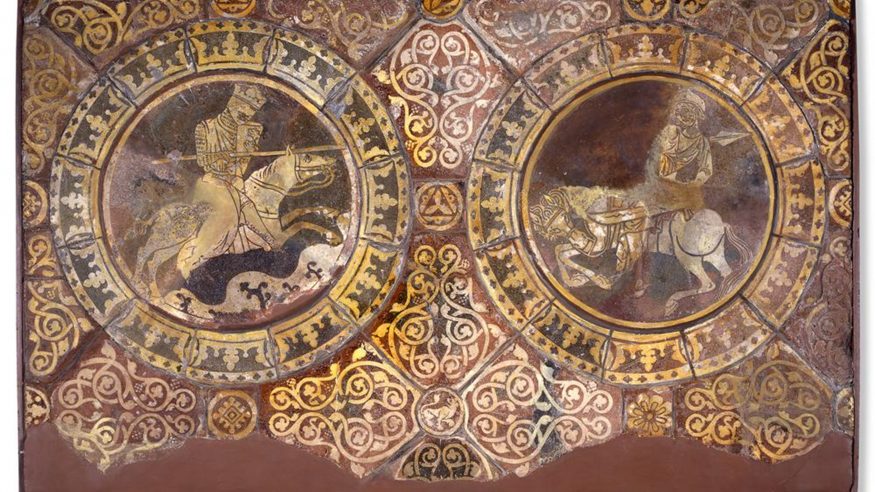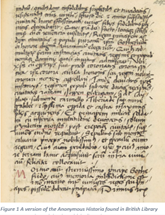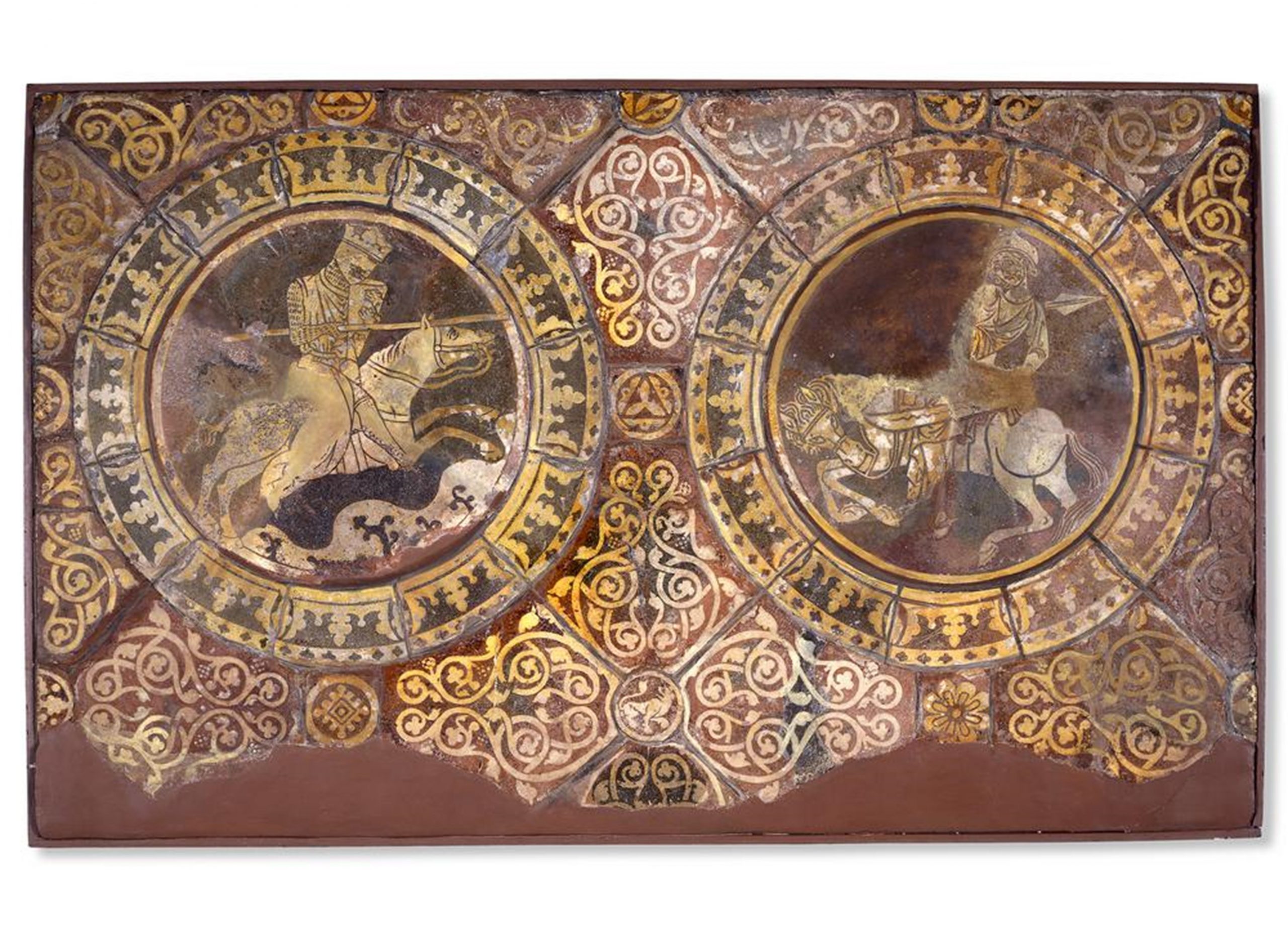History and Trauma in Twelfth-Century Jerusalem
17 October 2023
Writing in the Latin kingdom of Jerusalem sometime in the late 1180s or early 1190s, with the recent trauma of the Holy City’s loss to the Muslim sultan, Salah al-Din, in October 1187 still fresh in the memory, an anonymous Frankish settler sat down to pen an exhortatory call to arms that was coupled to a short, relentlessly positivist history of the First Crusade and the careers of Jerusalem’s kings up to the present time. In the text’s prologue, the author offered their rationale for this:
“I n his book De Re Militari, Vegetius teaches that the deeds of our predecessors are to be committed to writing in such a way that when posterity studies them it ought to imitate their praiseworthy acts […] For this reason let me now place my sorrowful face in the dust of our noble For this reason let me now place my sorrowful face in the dust of our noble forefathers by briefly recounting their deeds or acts, how some true soldiers of Christ thus assumed the name of His true militia, not without good reason, and they snatched this most holy city [Jerusalem] from the dogs and restored her to her true heirs, not by decorating the walls with their weapons, but by adorning battlefields with their shields. I do this in the hope that our present-day nobles, studying their deeds, are able to be inspired by love or sorrow to perform similar deeds to theirs.”
n his book De Re Militari, Vegetius teaches that the deeds of our predecessors are to be committed to writing in such a way that when posterity studies them it ought to imitate their praiseworthy acts […] For this reason let me now place my sorrowful face in the dust of our noble For this reason let me now place my sorrowful face in the dust of our noble forefathers by briefly recounting their deeds or acts, how some true soldiers of Christ thus assumed the name of His true militia, not without good reason, and they snatched this most holy city [Jerusalem] from the dogs and restored her to her true heirs, not by decorating the walls with their weapons, but by adorning battlefields with their shields. I do this in the hope that our present-day nobles, studying their deeds, are able to be inspired by love or sorrow to perform similar deeds to theirs.”
Our author, then, was not only stating that memories of the First Crusade, launched nearly one hundred years prior to this text, were an active agent in the social and literary cultures of the Crusader States, but that their resonance was also expected to be felt far to the west in Europe: thus joining “East” and “West” on a communal, emotional basis. And yet, as the author laments, while Jerusalem’s kings had, at least until 1187, achieved victory after victory over their Muslim enemies, by contrast “until today, none from among all the virile Christian kings, princes, dukes, counts, barons, or knights, with their arms that decorate the walls, who come or send [others] to the church of the Holy Sepulchre, has been able to restore it.”
Written at a moment of catastrophe for Latin Christendom, one that challenged the very foundations of the Catholic faith, the Historia regum Hierosolymitanorum Latinorum ad deplorationem perditionis terrae sanctae accomodata (“The History of the Kings of the Latins of Jerusalem up to the Lamentable Destruction brought to the Holy Land”), is, therefore, a vital window onto how contemporary Christians reacted to these events. And yet, for a long time, it has been largely ignored, with its importance unrecognised as a result of it being insecurely dated in a nineteenth-century edition by Charles Kohler. However, in a new article, co-written by myself and Dr Susan B. Edgington and soon to be published in the journal Crusades, the Historia’s significance is to be re-established.
 Figure 2 Imaginary duel between Richard the Lionheart and Salah al-Din on the Chertsey Tiles (copyright The British Museum)
Figure 2 Imaginary duel between Richard the Lionheart and Salah al-Din on the Chertsey Tiles (copyright The British Museum)
Firstly, we pinpoint the Historia’s dating to the years immediately following Jerusalem’s loss, particularly before the departure back to Europe of crusading forces led by Richard the Lionheart in 1192. This becomes clear not just from internal cues that tie the text to the exact literary climate of this time, especially that of the Latin kingdom (such as the distinct spelling employed for one of Jerusalem’s rulers, Amalric), but also by the fact that its version of events made its way into works produced in Europe in the mid–late 1190s by those who had participated in the crusade or had talked to returning veterans. Secondly, and as a result of this re-dating, we explore how the Historia is the earliest surviving historical text written to respond to the traumas of 1187 by someone living in the Holy Land. Moreover, in composing their text while crusading forces fought hard to respond to Salah al-Din and recover lost territories, and in doing so came into tense conflict with the surviving local nobles over the future power structures of the kingdom, our author had to tread a careful path to ensure the text’s purposes were met.
What the Historia speaks to, therefore, is that history – in a shock to none who work in the School of History, Archaeology and Religion – is a powerful tool; one that is not simply a recollection of the past, but one that can at any moment be rewritten, reimagined, and reused to speak to the immediate present. History is at its very essence a form of cultural memory, imbued with deeper meaning(s) that can, and often does, speak to the fears, beliefs, hopes, and aspirations not just of individuals, but of whole communities and societies. The Anonymous Historia, then, is such an attempt at forging and harnessing a certain collective cultural memory to both “remember” the past and inspire those in the present. It is a response to collective Christian trauma and the apparently divine castigation of the Frankish societies of the Crusader States, most especially those charged with defending Jerusalem, the single most important site in the Christian world.
But, more than that, it demonstrates the Janus-like forms that the construction and wielding of historical memory can take, especially in moments of change and crisis. For those in the Crusader States, the Historia makes clear that, despite their recent losses, they are the descendants of the bravest and most pious of kings, and that the events of 1187 were an aberration. For those in the Latin West, their failure to match the models of the First Crusade and the Jerusalemite kings is shameful, almost certainly because they had not dedicated their lives to settling in the Holy Land. The memory of the First Crusade thus could, and did, mean different things to different communities, even those united by faith and common heritage. The Anonymous author of the Historia knew this, and through their careful framing of the recent past, they forged a narrative that could both inspire local Franks to remember what they and their forebears had achieved and remind those in Europe of what they had shamefully failed to emulate.
Written by Dr Andrew D. Buck, Lecturer in Medieval History
If you want to know more about the research of Dr Buck’s research, you can visit his profile – Dr Andrew Buck – People – Cardiff
- American history
- Central and East European
- Current Projects
- Digital History
- Early modern history
- East Asian History
- Enlightenment
- Enviromental history
- European history
- Events
- History@Cardiff Blog
- Intellectual History
- Medieval history
- Middle East
- Modern history
- New publications
- News
- North Africa
- Politics and diplomacy
- Research Ethics
- Russian History
- Seminar
- Social history of medicine
- Teaching
- The Crusades
- Uncategorised
- Welsh History
- Pétain’s Silence
- Talking Politics in the Seventeenth Century
- Reflections on POWs on the 80th anniversary of the Second World War – views from a dissertation student
- The Long Life of Dic Siôn Dafydd and his ‘children’
- Collaboration across the pond: uniting histories of religious toleration in the American Revolution and European Enlightenment